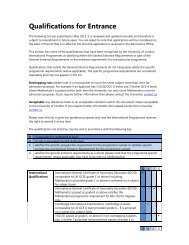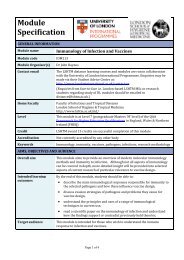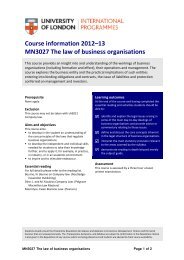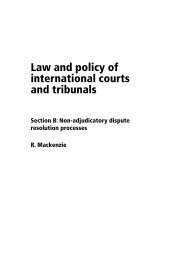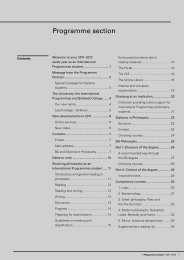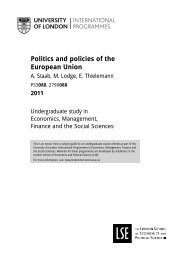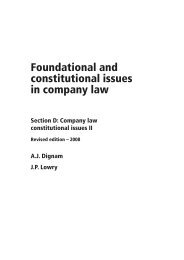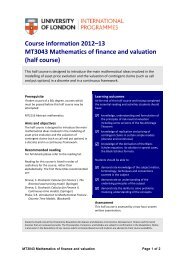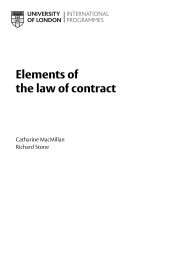Public law - University of London International Programmes
Public law - University of London International Programmes
Public law - University of London International Programmes
You also want an ePaper? Increase the reach of your titles
YUMPU automatically turns print PDFs into web optimized ePapers that Google loves.
page 18 <strong>University</strong> <strong>of</strong> <strong>London</strong> <strong>International</strong> <strong>Programmes</strong><br />
Introduction<br />
A constitution is a set <strong>of</strong> rules, generally in written form, which identify and regulate<br />
the major institutions <strong>of</strong> the state and govern the relationship between the state and<br />
the individual citizen. In most countries the written constitution is the ultimate source<br />
<strong>of</strong> legal authority; all actions <strong>of</strong> government and the <strong>law</strong>-making body (the legislature)<br />
must conform to the constitution. In order to uphold and interpret the constitution<br />
there will be a Supreme Court. As the constitution is the ultimate authority, any action<br />
which contravenes the rules <strong>of</strong> the constitution will be both unconstitutional and<br />
un<strong>law</strong>ful. Written constitutions also contain procedural rules for the amendment <strong>of</strong><br />
the constitution.<br />
Constitutions, whether written or unwritten, will share common features. They will<br />
identify the principal institutions <strong>of</strong> the state – the executive, the legislature and the<br />
judiciary. In relation to each <strong>of</strong> these, the constitution will specify their functions and<br />
powers. In addition the constitution will identify the rights and freedoms <strong>of</strong> citizens,<br />
through a Bill <strong>of</strong> Rights which operates both to protect citizens and to restrict the<br />
power <strong>of</strong> the state.<br />
In this chapter we consider the characteristics <strong>of</strong> the British constitution, and make<br />
brief comparisons with other constitutional arrangements.<br />
Learning outcomes<br />
By the end <strong>of</strong> this chapter and the relevant readings you should be<br />
able to:<br />
describe the principal forms that constitutions may take<br />
describe the distinction between a rigid and a flexible constitution<br />
evaluate the advantages and disadvantages <strong>of</strong> a largely unwritten<br />
constitution<br />
identify the essential features <strong>of</strong> the British constitution<br />
explain the scope and significance <strong>of</strong> the current constitutional<br />
reform programme<br />
briefly explain the historical forces that underlie the contemporary constitution.<br />
Learning outcomes: what are<br />
these for?<br />
Each chapter <strong>of</strong> your subject guide<br />
contains learning outcomes and<br />
reminders <strong>of</strong> learning outcomes.<br />
Like the other features <strong>of</strong> your guide,<br />
they are there to help you.<br />
See the section on ‘Using your<br />
subject guides’ in your Learning skills<br />
for <strong>law</strong> guide.




